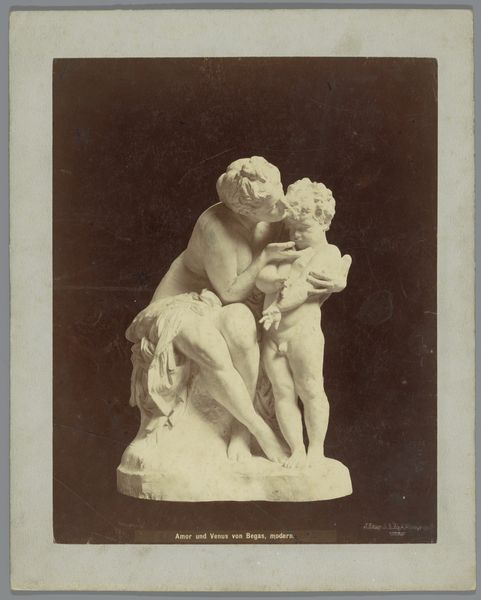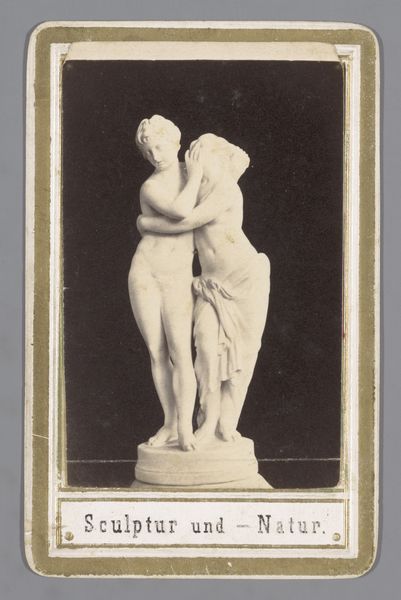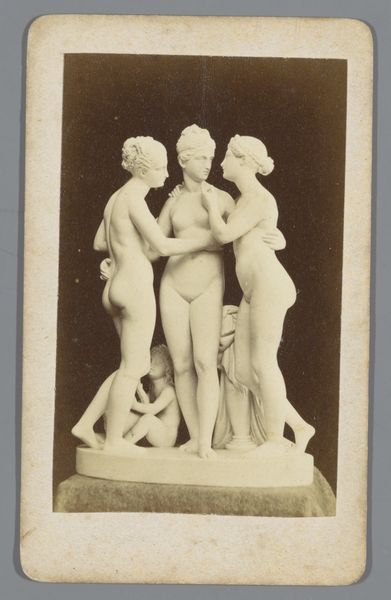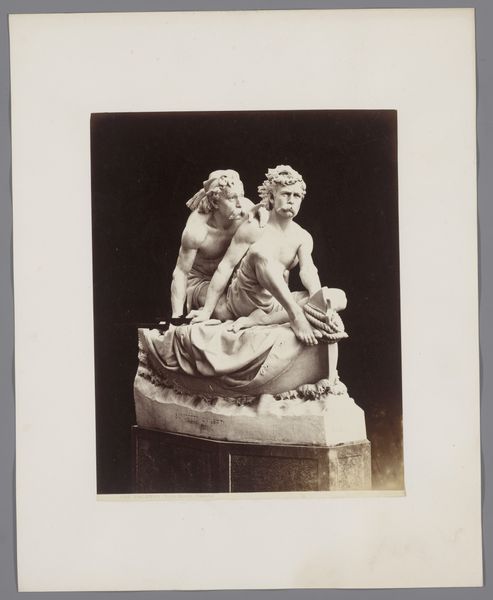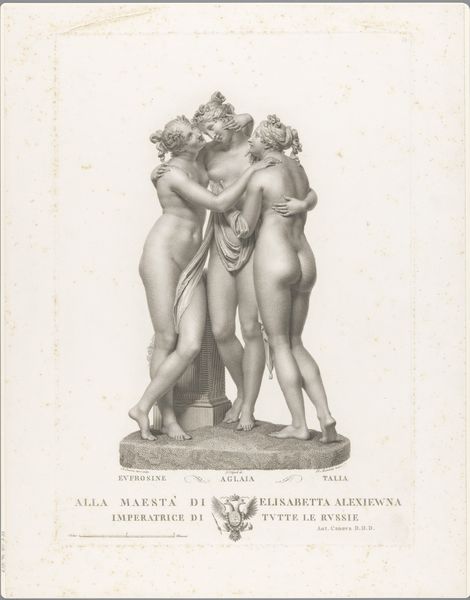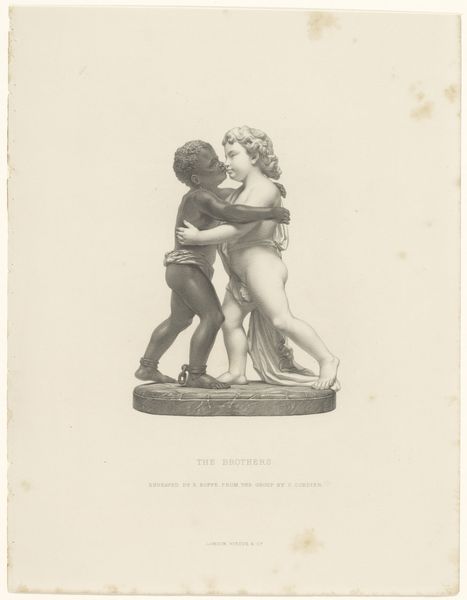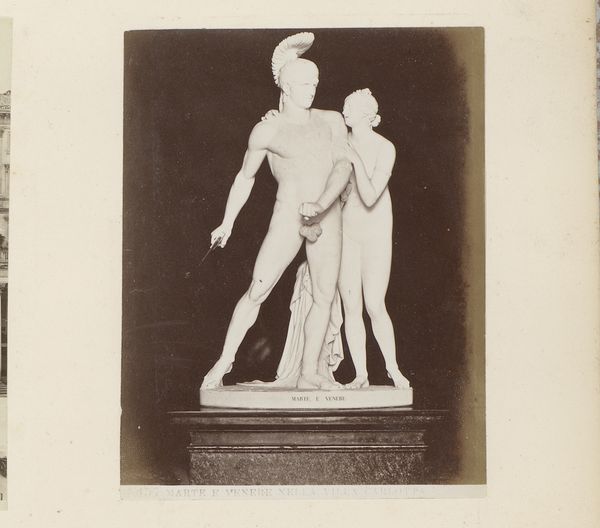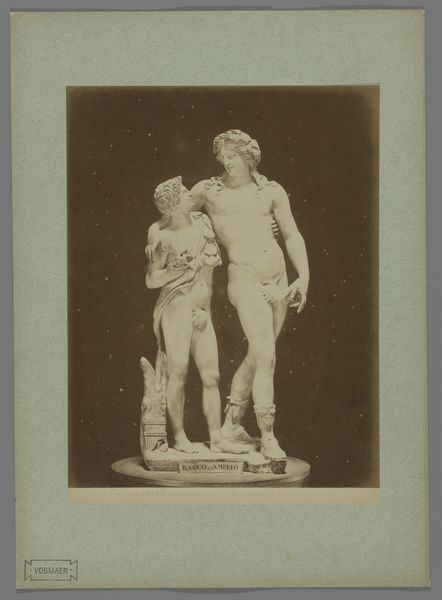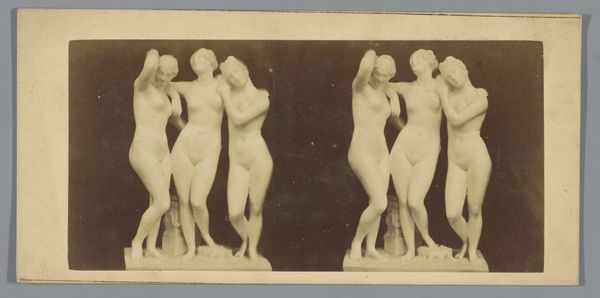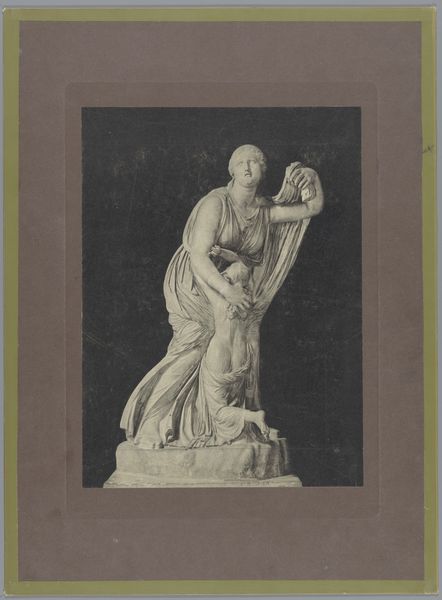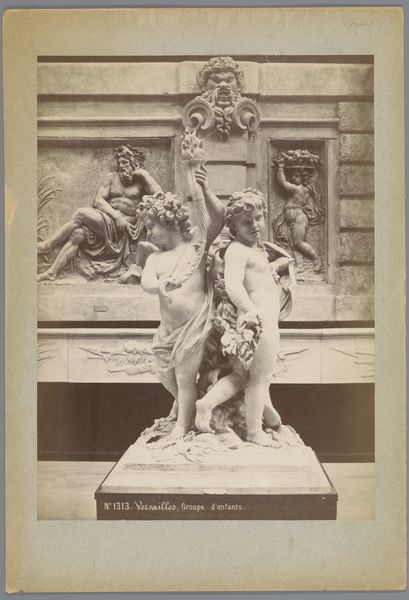
bronze, photography, sculpture
#
sculpture
#
classical-realism
#
bronze
#
figuration
#
photography
#
female-nude
#
sculpture
#
history-painting
#
academic-art
#
nude
Dimensions: Sheet: 7 5/16 × 6 1/4 in. (18.6 × 15.8 cm) Image: 5 15/16 × 6 1/4 in. (15.1 × 15.8 cm)
Copyright: Public Domain
Curator: This arresting photograph, titled "Statuette of the Three Graces," was captured by William Henry Fox Talbot in the 1840s. It resides now at the Metropolitan Museum of Art, and depicts—as you might surmise—a sculptural grouping of the three graces. Editor: The image possesses an undeniably haunting quality, don't you think? The dark background throws the pale sculpture into sharp relief, almost as if spotlighting the dynamics of Western beauty standards and female representation at the time of early photography. Curator: Precisely. The choice to photograph sculpture, a classical subject, places Talbot's photography in dialogue with long established art historical traditions. These Graces--traditionally, representations of beauty, charm, and joy--are frozen in what appears to be a kind of aesthetic and symbolic performance for the emerging Victorian gaze. It’s fascinating how this medium could both capture and, perhaps inadvertently, critique social values through familiar forms. Editor: Indeed. The Graces were often used to depict idealized feminine forms and the social expectations around female relationships. While at first glance, the sculpture and Talbot’s capture may reinforce classical ideals, the shadowy tonality introduced by Talbot, together with the choice of framing, subtly destabilize those narratives. Who gets to define "grace," and through what lens? Are these representations really innocent when understood through a wider context of art history, politics and power? Curator: And one might ask why photograph sculpture at all? Talbot was fascinated by capturing three-dimensional objects through the young science of photography. The way light models the forms becomes as important as the forms themselves. One of the intriguing things about the photograph is how it democratizes access to classical art. People who may not have had the ability to travel to view great works of sculpture were suddenly presented with representations of it through a new technology. It opened doors. Editor: I see that access point as a critical consideration, opening discourse about societal roles. This photo and these goddesses also bring forth the lack of representation for people of color, questioning what beauty truly signifies beyond its cultural constructions and biases. Whose bodies are granted grace, visibility, and access within our societies—then and now? Curator: Food for thought, indeed. By bringing new light to this subject matter and material with a new medium, photography offered ways to reimagine classical themes while providing new avenues to interpret symbols. Editor: It gives pause and challenges established understandings, as any effective commentary can, bridging history with ongoing dialogues around social constructs and equity.
Comments
No comments
Be the first to comment and join the conversation on the ultimate creative platform.
